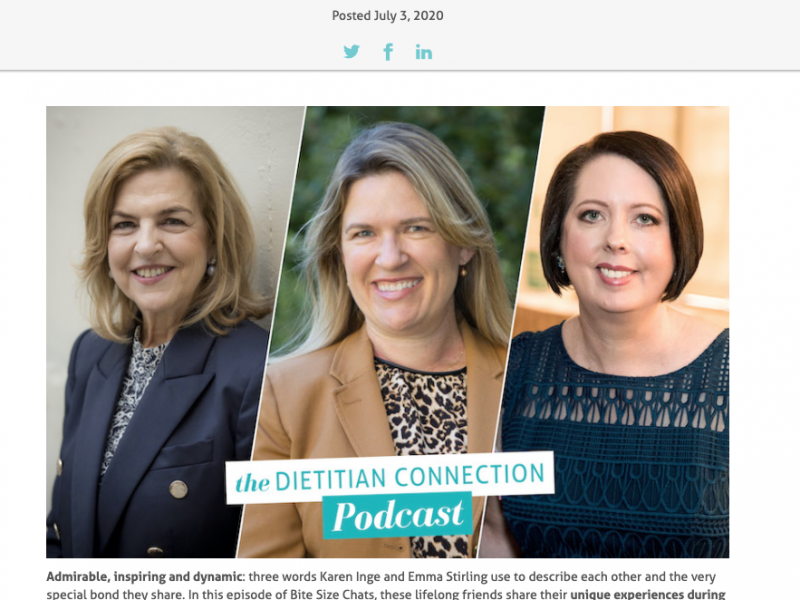By now I’m sure many of our nutrition savvy readers have heard the BIG announcement on our new food labelling system for Australia. The long debate over front of package labelling (FoPL) system has resulted in a decision from Food Regulator Forum in Sydney on the 14th of June, 2013. But what is the Health Star Rating system all about? And will it help consumers make more nutritious food choices or result in positive reformulation? We asked our Sub of the Month to investigate.
About our expert:
Nutritionist Nikki Boswell has a Graduate Certificate in Public Health Nutrition and a Masters in Human Nutrition, along with a Bachelor Degree in Adult Education and Community Development and is a qualified personal trainer, plus busy Mum of 3! Nikki is dedicated to helping other parents teach their children to love nutritious foods and to develop positive associations with eating experience through her own consultancy – check out her blog and Facebook page for The Kids Menu.
The development of the Health Star system has been the result of almost 2 years of collaboration by working groups containing representatives from food industry, consumer and public health groups. This system was seen to be superior to the previous industry adopted Daily Intake Guide (DIG) system, which has been criticised for being confusing and misleading.
The Health Star system will see packaged and processed food awarded half a star through to five stars, according to the ‘healthiness’ of the product as defined by Food Standards Australia New Zealand’s Nutrient Profiling Scoring Criterion. A corresponding “slider” will also feature above the stars to make clear the awarded rating and icons will be used to show the kilojoules, saturated fat, sugar, and sodium content of the product per 100g or 100ml. The inclusion of one nutrient which has health benefits such as calcium or fibre, may also be highlighted.

We caught up with Rosemary Stanton, member of the Technical Design Working Group for the new system, who said, “After looking at systems used in other countries and other areas to give a quick interpretive guide, stars were chosen. The public is familiar with stars on whitegoods (where the star system has resulted in products using less water and/or energy), hotels, restaurants and movie ratings. Most people know that ‘more stars is better’.”
How it will be implemented?
Despite such limitations in ‘useability,’ the DIG system is reported to appear voluntarily on 7200 Australian food products. Given the widespread voluntary adoption of this FoPL by the food industry, the Health Star Rating system will similarly be introduced as a voluntary initiative however if after two years the system has not been widely adopted a mandatory approach will be taken.
The uptake of the Heart Star labelling system will be at significant cost to the food industry, at an expected $200 million to implement, in contrast to the DIG system which has been a $72 million industry investment.
The costing of the Health Star system has been a significant criticism by the Australian Food and Grocery Council (AFGC), who question the “attractiveness” of the initiative for the food industry.
Will it work?
An “attractive” FoPL system to encourage the voluntary uptake by the food industry has controversially been an important consideration in opting for the Health Star system over other models such as Traffic-light Labelling which was preferentially supported by Public Health organisations.
According to Rosemary Stanton, “I don’t know of any specific industry response [as yet], apart from a cry of ‘unfair’ for a system based on per 100g (or 100 mL), except for single serve products where it will be per product. (The system is not to be used on soft drinks, cordials and sports drinks and not on confectionery. These foods will carry only a kJ count).”
It will be interesting to see if the Health Star system is similar to the Guiding Star system which has voluntarily been adopted by an American Supermarket Chain and validated within a 2 year study published in the American Journal of Clinical Nutrition which showed a positive impact on purchasing behaviour, equal to 2.9 million healthier choices.

Photo source: Hannaford
What are the limitations?
The potential for anomalous ratings has been a key criticism of the Heart Star Rating system as the current algorithms used to award the star rating fails to consider the nutrient profile within the context of the whole food, such as the case with dairy foods. These technical issues however are to undergo further consideration by the current working committee, with decisions expected by December 2013.
What are the benefits?
Rosemary Stanton suggests that, “Most shoppers don’t have time to check the back of food packages for the NIP or to scan the barcode with a mobile phone to access information and so a FoPL system is designed as one way to encourage shoppers to see at a glance which foods present a healthier choice. The aim of this system is to change purchasing patterns, but no one should think any system can do that on its own. No one who designed this system thinks it will reduce obesity on its own, but it is one step in a whole process of educating Australians about more appropriate food choices.”
So! As you can imagine there is a diversity of perspectives and opinions and we would be interested to hear your thoughts and open up discussion. You can read more from my perspective at The Kids Menu.
Editor’s comment:
Thanks so much Nikki for the excellent scoop and to Rosemary for her time. For me the devil will be in the detail and I really need to see which foods get 5 stars – fruit, veg, wholegrains, nuts, seeds, Greek yogurt, avocado??? But I do certainly like less talk and more action! Let’s hear what you have to say?


